The T-16 followed the British universal carrier, as an upgraded version of this first armoured personal carrier of WWII. The output Ford was capable meant 13,000+ T-16 were manufactured in Massachusetts, mostly used by the British and Canadian Armies from 1943 up to the end of the war, on all fronts. British designation was T-16 Mark 1, but there were more variants along the way. It was a towing vehicle for light field artillery, ammo carrier, personal and supply carrier. The whole programme was designed for and under Lend-Lease.

The Carden Loyd tankettes lineage, purchased by industrialist giant Vickers Arsmtrong, led to the development of the 1934 "Universal Carrier", a concept pushed forward after large scale manoeuvers held at Salisbury Plains, which shown the clear superiority of an all-motorized batallion, the Experimental Mechanized Force, over a classic one with foot infanty and horse-drawn artillery. This came after tje contested "Battle of Beresford Bridge".
However, trench warfare was still also a likely scenario for a future war, and like the French, the British wanted their light armoured carrier to be able to supply troops in a contested area (under fire). Both countries pursued the same goal wit the same solutions, the French mass-producing the Renault UE and later Lorraine 37L, and Vickers on its side obtained the right to produce the Universal Carrier Mark I in greater numbers past 1936.
Series were up over the following years, starting with the standard Mark II in 1935-1940, then from 1940 to 1945 with detailed improvements, not only by Britain, but its allied as well: This standard version had a square gallery and was versatile enough to accommodate all kind of military payloads easily. They were always equipped with a towing device. The Mk.II was the most heavily produced, from 1940 to 1945, in Great Britain, in the Commonwealth and Canada under various licenses.
Their speed and agility, but most of all, tremendous versatility, became legendary, despite their lack of armor and weaponry. Infantry battalions were given 10 to 33 of these from 1940 to 1943 and motorized artillery battalions were entirely equipped with these vehicles, each carrying an ordinance antitank QF 6pdr (2.24 in/57 mm) gun. The needs of the commonwealth and battle-proven utility of the Universal Carrier led the commission present in the US for lend-lease purchases, to enquire about US manufacturers the possibility of an added production, exclusively for lend-lease, since the US had no interest for the vehicle. The Ford Motor co. rose to the challenged and propose to setup a production line for these in its new Massachusetts plant. Also, it went through mutiple experimentations in 1942 to improve on the vehicle and evaluate a possible use of the Marines in the Pacific.
The needs of the commonwealth and battle-proven utility of the Universal Carrier led the commission present in the US for lend-lease purchases, to enquire about US manufacturers the possibility of an added production, exclusively for lend-lease, since the US had no interest for the vehicle. The Ford Motor co. rose to the challenged and propose to setup a production line for these in its new Massachusetts plant. Also, it went through mutiple experimentations in 1942 to improve on the vehicle and evaluate a possible use of the Marines in the Pacific.
However if Vickers sent its blueprints and even two complete vehicles to the US by early 1942, Ford's engineers which studied the model soon found issues with the design and also many ways to improve it. The definitive plans for the T16 were submitted in 1943 to the purchasing commission. The vehicle was originally designated as the cargo carrier T16, but renamed as the "universal carrier T16" to avoid hurting British nomenclature. It was eventually accepted in March 1943.
-Simplified hull design, more suited for mass production
-Different engine and steering system
-Redesigned suspension with two bogies per side and new track.
The main difference was indeed in the drive train, with the British vehicle having a single two-wheeled bogie on either side plus half one for a single independently sprung wheel on each side. The T16 featured two two-wheeled bogies per side, and the springs faced the opposite directions.
The T16 also used a conventional controlled differential plus steering levers, whereas the UC had a more common steering wheel plus track bending system, less reliable. The purchase commissioned specified a large, 1,200lb (540kg) payload given the modified drivetrain. None was ever produced for the US Army (which why it never received the "M" service denomination) and all 19,193 were shipped to the British and commonwealth forces as well as Soviet Union.
Combat weight, gross with payload was now of 10,500lbs (4,760kg). The vehicle stayed compact with the same height at 61 inches (1,5 meters), new lenght of 155.125 inches (3,94018 meters) and same width at 83.5 inches (2,12). The track tread was 61.5 inches (1,56 m initially) and Ground clearance was 10.5 inches of 26.7cm. Initial Ground pressure was 7.4 psi or 52kg/cm², enhanced on the T16E2.
The Ford GAU was a 8 cylinders in V, 90°, 4-cycle, and L-head, running with gasoline. Its net Horsepower was 102.5 hp @ 4000 rpm for a torque of 176 ft-lb at 2000rpm. Steering as said earlier was using controlled differential with steering levers as in any tank, and the transmission used a Spur gear, with 4 speeds forward, and one reverse. Supensions used coil Shock absorbers. There were four roawheels per side on two bogies, same type as the original vehicle, all cast, 4 spider type (6 with the rear idlers), and with the T16E2, full cast but thinner to simplify production.
The tracks were moved by drive sprokets and comprised two track return rollers close to the bogies but independent. The two forward 35-tooth rear drive sprockets were adjustable. The tracks themselves were T79 models with Outside guide, single pin, cast steel. They measured 10 inches or 25cm for a pitch of 1.75" or 4.45cm. The Shoes/track links were 174 for a Ground contact length of 71 inches or 1,8 m.
Max level road speed was 30 mph sustained or 50kph. The vehicle ws tested able to gap a trench of 3 inches or 76cm wide, climb a grade of 60%, a vertical obstacle of 18 inches or 46cm. Its turning radius was 32 feet or 9.8m and its max fording depth was unlimited since it had enough buoyancy to float, lbeit the open configuration prevented any use but on calm rivers; With a fuel capacity of 23.6 US gallons or l89.3 metric Liters its cruising range was between 100 and 150 miles (160-240km).
Upper front: 0.21875 inches (5,5563 cm)
Lower front: 0.28125 inches (7,1438 cm)
Sides: 0.28125 inches (7,1438 cm)
Rear: 0.28125 inches (0.71438 cm)
Floor: 0.28125 inches (0.71438 cm).
 Initially the basic Universal Carrier was built by Ford Canada under licence. This was the very same vehicle as the British Vickers UC, but The by then, its inherent weaknesses had been all well reported. Its rear axles prone to failure under sustained load, work-heavy steering system which needed constant adjustments, excess wearing out of the brake shoes, suspension and track failures under high loads. The Canadian UC had a 221 cu.in Ford engine coupled with a 6 volt electrical system and it was unreliable in battlefield conditions. The vehicle was on paper able of towing the standard six-pdr antitank gun with ammunitions, parts and its full crew, but this had severe consequences for the drivetrain and its components.
Initially the basic Universal Carrier was built by Ford Canada under licence. This was the very same vehicle as the British Vickers UC, but The by then, its inherent weaknesses had been all well reported. Its rear axles prone to failure under sustained load, work-heavy steering system which needed constant adjustments, excess wearing out of the brake shoes, suspension and track failures under high loads. The Canadian UC had a 221 cu.in Ford engine coupled with a 6 volt electrical system and it was unreliable in battlefield conditions. The vehicle was on paper able of towing the standard six-pdr antitank gun with ammunitions, parts and its full crew, but this had severe consequences for the drivetrain and its components.
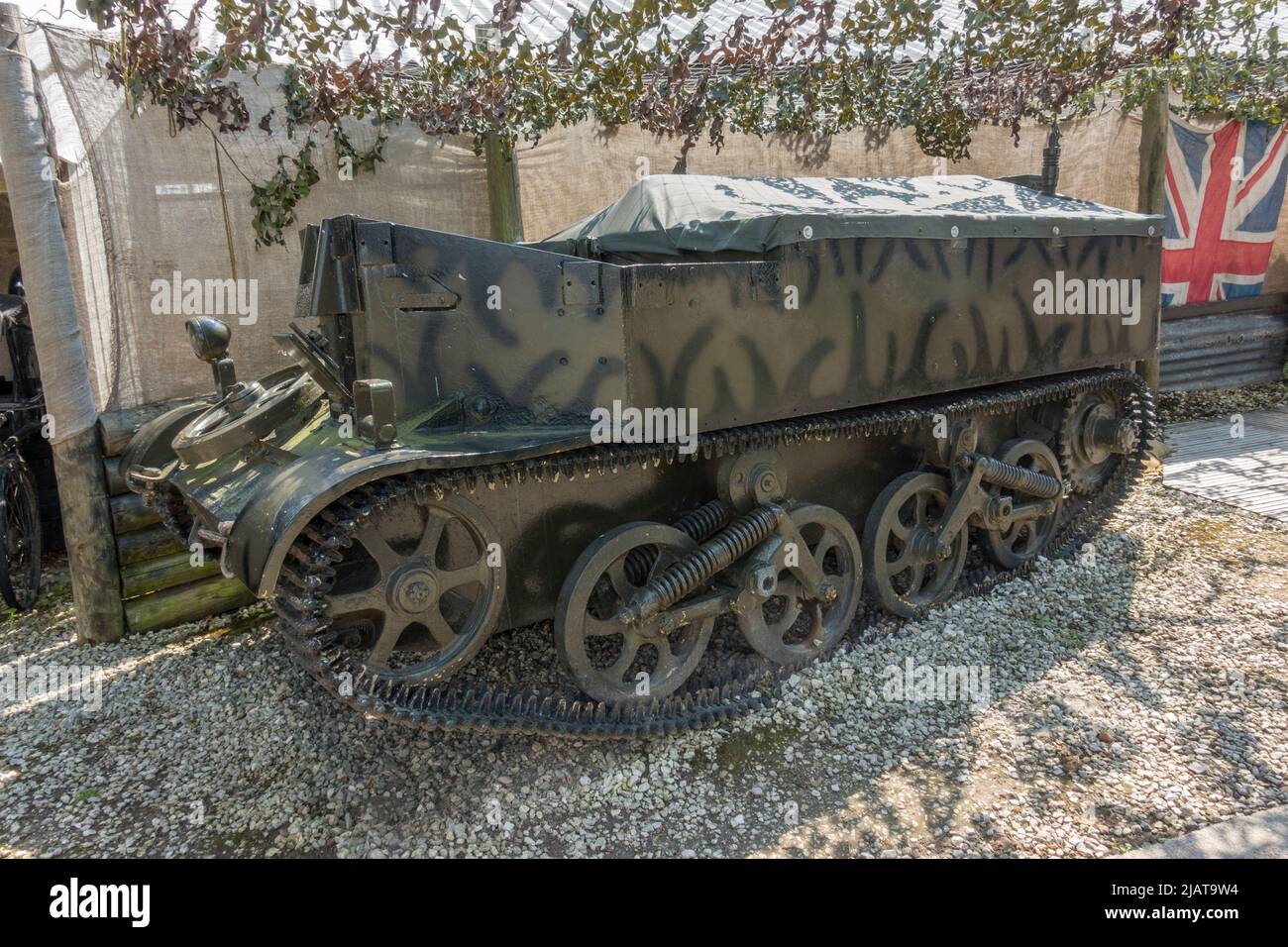
T16 Mk.1 with a fancy camouflage at Eden camp of modern History Museum near Malton North Yorkshire.
Ford U.S.A. knew about all these issues and worked on a 'all-American' version, and under agreement that 30,000 carriers were built under the American designation T16, the new vehicle benefited of many production engineering improvements. Canada, bveing on the list of receivers, obtained part of the 13,893 T16s that went out of Ford's Sommerville plant near Boston, Massachusetts, bu June 1944. So they took part in the Nortwestern campaign, not Italy.
The more popular version arrived later in this western campaign, the 4.2-inch Mortar Carrier which ran with the more reliable Ford Mercury engine. Nealry all Canadian T16 were used that way. The Soviets had a similar variant, but only 96 were shipped there, fate unknown.
The British obtained some 3,200 T16 in 1944-1945, but they considered it mechanically unreliable (mostly due to its engine) with carrying capacity so it was chiefly used by Canadian forces, ad artillery tractor. Postwar, they were sold to Argentina (unknown numbers), Swiss (300) and the Dutch. In 1951 The Netherlands had a motley collection of 200 Loyds, 180 T16s and 40 Windsors for their colonial war in future Indonesia. The UK sold an unknown number to Argentina, along with countless CMP trucks.
The Swiss case was interesting as they developed their own variant of the T16. There, it was called the "Pz Begl Fz UC" (Panzergrenadier Begleit Fahrzeug Universal Carrier). It was tailored to acompany the fast and nimble AMX-13 light tank in 1951 with infantry, creating some sort of "light panzerdivision". This became the first Swiss APC, with 302 procured at 7.400 Swiss Francs apiece, and used by the Dragoons and armoured infantry from 1953 until 1963. In the rear compartment were seated six panzergrenadiere, and the vehicle were fully covered by a tarpaulin thanks to add-on frame welded supports.

The Swiss Panzer Museum also states that 300 T16s were sold to Biafra via a dealer in Toronto by 1965, or later in the 1980s from surplus depots. These were shipped to Augusta in USA and turned into into logging machinery, the remainder sold to private collectors (most today came from the same source). They were often modified to "look the part" of WW2 Universal carriers.
TM 9-746 Universal Carrier T16. Washington, DC 11 August 1943.
ORD 9 SNL G-166 Service Parts Catalogue for Carrier, Universal, T16. Washington DC HQ April 1944.
Hunnicutt, R.P. Bradley: A History of American Fighting and Support Vehicles. Presidio Press 1999.
Chamberlain, Peter, and Duncan Crow. Carriers. Ed. Duncan Crow. Profile Publications
TM 9-2800 Standard Military Motor Vehicles. Washington, DC September 1943.
Crismon, Fred W. U.S. Military Tracked Vehicles. Motorbooks International 1992.
Fletcher, David, The Universal Tank. London: HMSO, 1993.
Gregg, William, Canada's Fighting Vehicles: Europe 1943-45.
The American Arsenal: The World War II Official Standard Ordnance Catalog. Greenhill Books/Stackpole books
Vanderveen, Bart, Ford at War: a brief survey of the American Ford Motor Co's war effort. Wheels & Tracks
afvdb.50megs.com
canadianarmsandarmour.ca
powderriverordnance.com
mapleleafup.net
inchhighguy.wordpress.com
mapleleafup.nl
6thaarr.com
warhistoryonline.com
motorious.com
hmvf.co.uk/
en.wikipedia.org
ASPHM Universal Carrier T16 youtube
Universal Carrier

Development of the Ford T16
About the Universal Carrier Concept
The Universal Carrier, was the world's most produced armoured personal carrier, until the US M113 came out in the late 1950s. Also called the Bren carrier, it dreived from a long line of prototypes of super-light tankettes created by Carden loyd (such as the last Carden loyd Mark VI), under the impulsion of WWI veteran Major Giffard Lequesne Martel. The later dreamed abiut a "one man tank", made from commercial parts to be super-cheap and mass produced, al last compatible with the new scale of the professional British army in 1920, born of trench warfare and under the influence of Basil Liddell Hart, and Col. Fuller.The Carden Loyd tankettes lineage, purchased by industrialist giant Vickers Arsmtrong, led to the development of the 1934 "Universal Carrier", a concept pushed forward after large scale manoeuvers held at Salisbury Plains, which shown the clear superiority of an all-motorized batallion, the Experimental Mechanized Force, over a classic one with foot infanty and horse-drawn artillery. This came after tje contested "Battle of Beresford Bridge".
However, trench warfare was still also a likely scenario for a future war, and like the French, the British wanted their light armoured carrier to be able to supply troops in a contested area (under fire). Both countries pursued the same goal wit the same solutions, the French mass-producing the Renault UE and later Lorraine 37L, and Vickers on its side obtained the right to produce the Universal Carrier Mark I in greater numbers past 1936.
Series were up over the following years, starting with the standard Mark II in 1935-1940, then from 1940 to 1945 with detailed improvements, not only by Britain, but its allied as well: This standard version had a square gallery and was versatile enough to accommodate all kind of military payloads easily. They were always equipped with a towing device. The Mk.II was the most heavily produced, from 1940 to 1945, in Great Britain, in the Commonwealth and Canada under various licenses.
Their speed and agility, but most of all, tremendous versatility, became legendary, despite their lack of armor and weaponry. Infantry battalions were given 10 to 33 of these from 1940 to 1943 and motorized artillery battalions were entirely equipped with these vehicles, each carrying an ordinance antitank QF 6pdr (2.24 in/57 mm) gun.
Enters the US industry
 The needs of the commonwealth and battle-proven utility of the Universal Carrier led the commission present in the US for lend-lease purchases, to enquire about US manufacturers the possibility of an added production, exclusively for lend-lease, since the US had no interest for the vehicle. The Ford Motor co. rose to the challenged and propose to setup a production line for these in its new Massachusetts plant. Also, it went through mutiple experimentations in 1942 to improve on the vehicle and evaluate a possible use of the Marines in the Pacific.
The needs of the commonwealth and battle-proven utility of the Universal Carrier led the commission present in the US for lend-lease purchases, to enquire about US manufacturers the possibility of an added production, exclusively for lend-lease, since the US had no interest for the vehicle. The Ford Motor co. rose to the challenged and propose to setup a production line for these in its new Massachusetts plant. Also, it went through mutiple experimentations in 1942 to improve on the vehicle and evaluate a possible use of the Marines in the Pacific.
However if Vickers sent its blueprints and even two complete vehicles to the US by early 1942, Ford's engineers which studied the model soon found issues with the design and also many ways to improve it. The definitive plans for the T16 were submitted in 1943 to the purchasing commission. The vehicle was originally designated as the cargo carrier T16, but renamed as the "universal carrier T16" to avoid hurting British nomenclature. It was eventually accepted in March 1943.
Production and Variants
American production of the Universal Carrier registered itself as a follow-up of the British Marks II-III. The Mark I was the basic vehicle. It was also called the "N°2". Design differences included the following:-Simplified hull design, more suited for mass production
-Different engine and steering system
-Redesigned suspension with two bogies per side and new track.
The main difference was indeed in the drive train, with the British vehicle having a single two-wheeled bogie on either side plus half one for a single independently sprung wheel on each side. The T16 featured two two-wheeled bogies per side, and the springs faced the opposite directions.
The T16 also used a conventional controlled differential plus steering levers, whereas the UC had a more common steering wheel plus track bending system, less reliable. The purchase commissioned specified a large, 1,200lb (540kg) payload given the modified drivetrain. None was ever produced for the US Army (which why it never received the "M" service denomination) and all 19,193 were shipped to the British and commonwealth forces as well as Soviet Union.
T16E2
Starting in 1945, the T16E2 entered production, longer overall for more stability and the rear bogie were reversed so both side springs were pointing the same way. The front bogie also was moved back from just 6" (15cm), and the rear bogie was 9" (23cm) to the rear, also for balance. The drive axle was also moved 8" (20cm) back. In the end, these T16E2 had an overall lenght of 162" (411 cm) for a 77" (200cm) track ground contact length, which equalled 6.8psi (0.48kg/cm²) in ground pressure. This made it more capable of dealing with snow, sand and mud. Fuel capacity also was raised to 27.8 US gallons (105L). Also, the front armor was increased up to 0.390625 inches or 0.992188cm, pretty close to 1 cm.Licence Production
- Carrier, Universal No.2 Mark I - Ford GAEA engine
- Carrier, Universal No.2A Mark I - Ford GAE engine
- Carrier, Universal No.2 Mark II - Ford GAE engine
- Carrier, Universal No.2A Mark II - Ford GAEA engine
- Carrier, Universal No.2 Mark III - Ford GAE engine
- Carrier, Universal No.2A Mark III - Ford GAEA engine
Design of the T-16
The Carrier, Universal, T16, Mark I. was thus significantly improved and followed the 1942 Ford Canada variant already manufactured under Lend Lease. Ford started production from March 1943 up to the end of the war. The full vehicle measured 155 in (3.9 m), so noticeably longer than the Universal Carrier and with the extra road wheel, or double rear bogie as described above. Each indeed had two pairs of full Horstmann dual-wheel suspension per side. The engine was new. It was provided by the Ford Mercury division and was the V8 239 (GAU370) which was rated as the original British engine. No brake/warp but also track-brake steering with levers for each side, which was a more sturdy, simpler steering system.Combat weight, gross with payload was now of 10,500lbs (4,760kg). The vehicle stayed compact with the same height at 61 inches (1,5 meters), new lenght of 155.125 inches (3,94018 meters) and same width at 83.5 inches (2,12). The track tread was 61.5 inches (1,56 m initially) and Ground clearance was 10.5 inches of 26.7cm. Initial Ground pressure was 7.4 psi or 52kg/cm², enhanced on the T16E2.
Mobility

The Ford GAU was a 8 cylinders in V, 90°, 4-cycle, and L-head, running with gasoline. Its net Horsepower was 102.5 hp @ 4000 rpm for a torque of 176 ft-lb at 2000rpm. Steering as said earlier was using controlled differential with steering levers as in any tank, and the transmission used a Spur gear, with 4 speeds forward, and one reverse. Supensions used coil Shock absorbers. There were four roawheels per side on two bogies, same type as the original vehicle, all cast, 4 spider type (6 with the rear idlers), and with the T16E2, full cast but thinner to simplify production.
The tracks were moved by drive sprokets and comprised two track return rollers close to the bogies but independent. The two forward 35-tooth rear drive sprockets were adjustable. The tracks themselves were T79 models with Outside guide, single pin, cast steel. They measured 10 inches or 25cm for a pitch of 1.75" or 4.45cm. The Shoes/track links were 174 for a Ground contact length of 71 inches or 1,8 m.
Max level road speed was 30 mph sustained or 50kph. The vehicle ws tested able to gap a trench of 3 inches or 76cm wide, climb a grade of 60%, a vertical obstacle of 18 inches or 46cm. Its turning radius was 32 feet or 9.8m and its max fording depth was unlimited since it had enough buoyancy to float, lbeit the open configuration prevented any use but on calm rivers; With a fuel capacity of 23.6 US gallons or l89.3 metric Liters its cruising range was between 100 and 150 miles (160-240km).
Protection
The main armoyr design and configuration was kept, with the driver on one side and MG-gunner on the other, in a protruding casemate. Still open-topped, the vehicle had observations slits to drive crouched for the driver. The gunner was better protected. The armour was as followed:Upper front: 0.21875 inches (5,5563 cm)
Lower front: 0.28125 inches (7,1438 cm)
Sides: 0.28125 inches (7,1438 cm)
Rear: 0.28125 inches (0.71438 cm)
Floor: 0.28125 inches (0.71438 cm).
Armament
The vehicle being tailored for British use, it had the same Bren light machine gun Mounted in the hull left front casemate, with limited traverse and no elevation, unless placed on a pintle for some variants. That and personal weapons of the crew, notably Sten guns and webley pistols. In APC configuration the T16 was a bit roomier but still could only carry six men: Driver, gunner, and four seated in the back with full gear.T16 specifications | |
| Dimensions (L-w-H) | 3.94 x 2.12 x 1.5 m (12ft 11 in x 6 ft 11-1/2 in x 5 ft 1 in) |
| Total weight, battle ready | 4,7 tons (10.500-9,500 lbs) |
| Crew | 2+2/3 |
| Propulsion | Ford 239 V8 model GAU370, 100 hp |
| Ground clearance/contact/pressure: | 10-1/2 inch, 71 in, 7.4 lb/sq in |
| Top speed | 33 mph (53 kph) |
| Suspensions | Hortsmann, coils, leaf springs |
| Range | c500 km |
| Armament | Light Machine Gun |
| Armor | 6 to 7 mm (0.25 - 0.8 in) |
The Canadian T16
 Initially the basic Universal Carrier was built by Ford Canada under licence. This was the very same vehicle as the British Vickers UC, but The by then, its inherent weaknesses had been all well reported. Its rear axles prone to failure under sustained load, work-heavy steering system which needed constant adjustments, excess wearing out of the brake shoes, suspension and track failures under high loads. The Canadian UC had a 221 cu.in Ford engine coupled with a 6 volt electrical system and it was unreliable in battlefield conditions. The vehicle was on paper able of towing the standard six-pdr antitank gun with ammunitions, parts and its full crew, but this had severe consequences for the drivetrain and its components.
Initially the basic Universal Carrier was built by Ford Canada under licence. This was the very same vehicle as the British Vickers UC, but The by then, its inherent weaknesses had been all well reported. Its rear axles prone to failure under sustained load, work-heavy steering system which needed constant adjustments, excess wearing out of the brake shoes, suspension and track failures under high loads. The Canadian UC had a 221 cu.in Ford engine coupled with a 6 volt electrical system and it was unreliable in battlefield conditions. The vehicle was on paper able of towing the standard six-pdr antitank gun with ammunitions, parts and its full crew, but this had severe consequences for the drivetrain and its components.

T16 Mk.1 with a fancy camouflage at Eden camp of modern History Museum near Malton North Yorkshire.
Ford U.S.A. knew about all these issues and worked on a 'all-American' version, and under agreement that 30,000 carriers were built under the American designation T16, the new vehicle benefited of many production engineering improvements. Canada, bveing on the list of receivers, obtained part of the 13,893 T16s that went out of Ford's Sommerville plant near Boston, Massachusetts, bu June 1944. So they took part in the Nortwestern campaign, not Italy.
The more popular version arrived later in this western campaign, the 4.2-inch Mortar Carrier which ran with the more reliable Ford Mercury engine. Nealry all Canadian T16 were used that way. The Soviets had a similar variant, but only 96 were shipped there, fate unknown.
The T16 in action

The British obtained some 3,200 T16 in 1944-1945, but they considered it mechanically unreliable (mostly due to its engine) with carrying capacity so it was chiefly used by Canadian forces, ad artillery tractor. Postwar, they were sold to Argentina (unknown numbers), Swiss (300) and the Dutch. In 1951 The Netherlands had a motley collection of 200 Loyds, 180 T16s and 40 Windsors for their colonial war in future Indonesia. The UK sold an unknown number to Argentina, along with countless CMP trucks.
The Swiss case was interesting as they developed their own variant of the T16. There, it was called the "Pz Begl Fz UC" (Panzergrenadier Begleit Fahrzeug Universal Carrier). It was tailored to acompany the fast and nimble AMX-13 light tank in 1951 with infantry, creating some sort of "light panzerdivision". This became the first Swiss APC, with 302 procured at 7.400 Swiss Francs apiece, and used by the Dragoons and armoured infantry from 1953 until 1963. In the rear compartment were seated six panzergrenadiere, and the vehicle were fully covered by a tarpaulin thanks to add-on frame welded supports.

The Swiss Panzer Museum also states that 300 T16s were sold to Biafra via a dealer in Toronto by 1965, or later in the 1980s from surplus depots. These were shipped to Augusta in USA and turned into into logging machinery, the remainder sold to private collectors (most today came from the same source). They were often modified to "look the part" of WW2 Universal carriers.
Read More/Src
Books
Cat. Standard Ordnance Items, 2nd edition 1944, vol. 1. Washington DC June 1945.TM 9-746 Universal Carrier T16. Washington, DC 11 August 1943.
ORD 9 SNL G-166 Service Parts Catalogue for Carrier, Universal, T16. Washington DC HQ April 1944.
Hunnicutt, R.P. Bradley: A History of American Fighting and Support Vehicles. Presidio Press 1999.
Chamberlain, Peter, and Duncan Crow. Carriers. Ed. Duncan Crow. Profile Publications
TM 9-2800 Standard Military Motor Vehicles. Washington, DC September 1943.
Crismon, Fred W. U.S. Military Tracked Vehicles. Motorbooks International 1992.
Fletcher, David, The Universal Tank. London: HMSO, 1993.
Gregg, William, Canada's Fighting Vehicles: Europe 1943-45.
The American Arsenal: The World War II Official Standard Ordnance Catalog. Greenhill Books/Stackpole books
Vanderveen, Bart, Ford at War: a brief survey of the American Ford Motor Co's war effort. Wheels & Tracks
Links
robertsarmory.comafvdb.50megs.com
canadianarmsandarmour.ca
powderriverordnance.com
mapleleafup.net
inchhighguy.wordpress.com
mapleleafup.nl
6thaarr.com
warhistoryonline.com
motorious.com
hmvf.co.uk/
en.wikipedia.org
ASPHM Universal Carrier T16 youtube
Universal Carrier
Videos
Model Kits
Not a lot: like this Resicast 1:35 kit.3D
Model on Forja 3DGallery
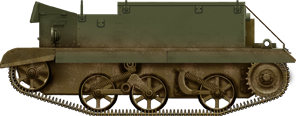
Bren Carrier, 1943, to compare
The following are not to scale, they are 1.5 times larger to see them more clearly
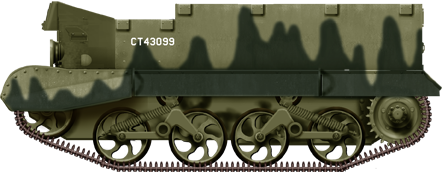
Canadian T16, with the spiral variant roadwheels, Normandy 1944
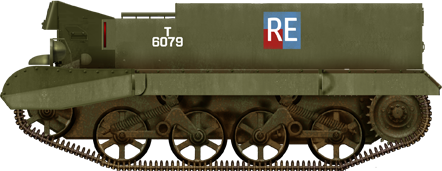
Canadian T16 Mk.1 with the old style spoked wheels
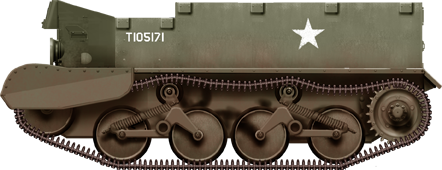
Canadian T16E2 with the new simplified full cast roadwheels.
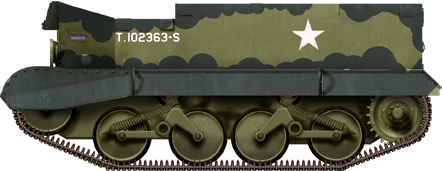
Canadian T16E2, Germany 1945
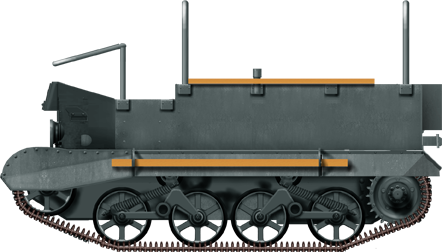
Swiss T16, now preserved
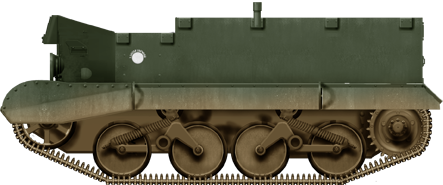
Argentinian T-16 1960s
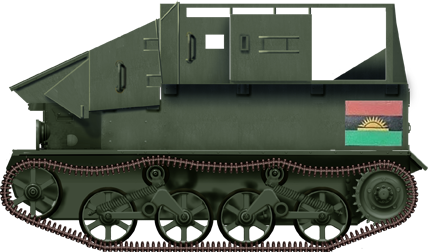
Modified T16 of the Biafra Rebels, 1980s

WW2 Tanks




























WW2 tanks posters

All Tiger tanks liveries.

Panther liveries and variants

WW2 Armour - All tanks











Tanks aces and single tanks series

Find more there

Museums, Movies, Books & Games
The Tanks and Armor in pop culture
Tanks and armored vehicles in general are only really grasped when seen first person: The mass, the scale, it's all there. Explore also the way tanks were covered in the movie industry, in books and in video games.Movies:
Best tanks movie on warhistoryonline.com
On imdb.com
On bestsimilar.com/
miltours.com
liveabout.com/
watchmojo.com
Video Games:
pcgamesn.com
historyhit.com
levvvel.com
vg247.com/best-tank-games
mmobomb.com/
alienwarearena.com

